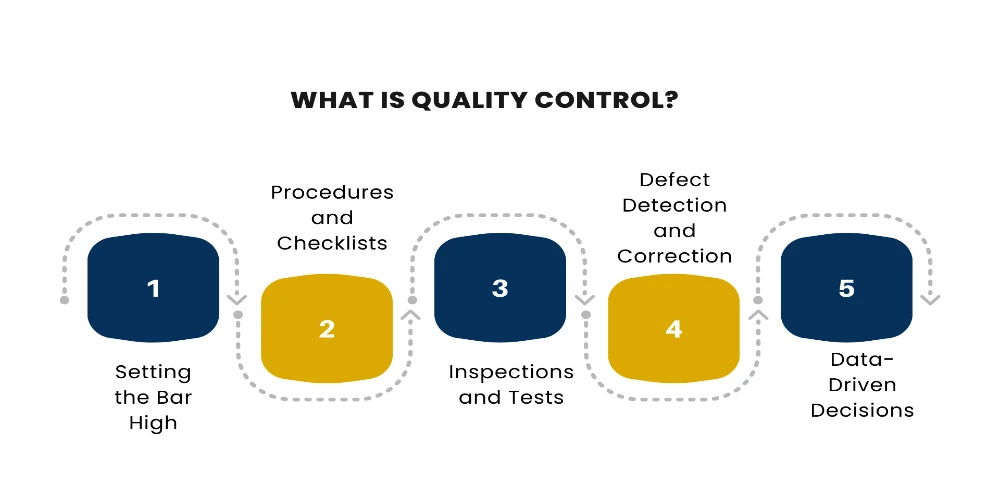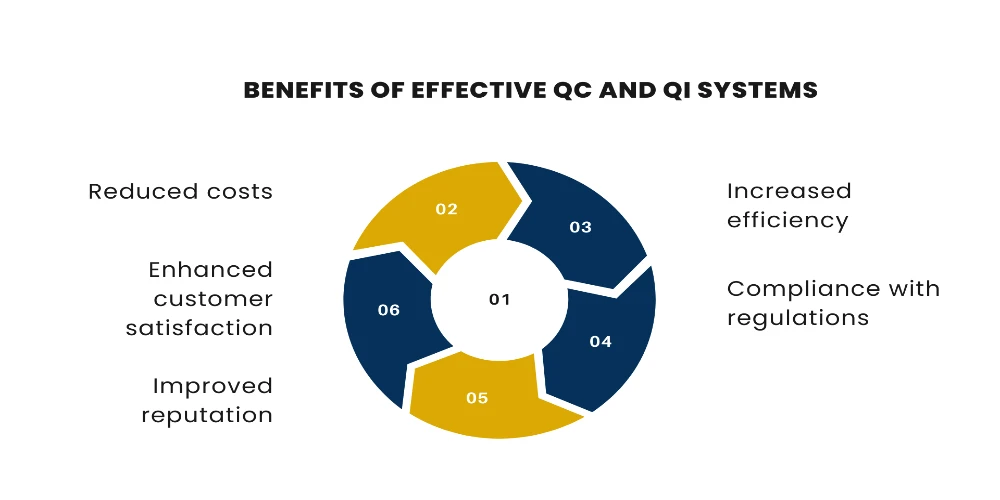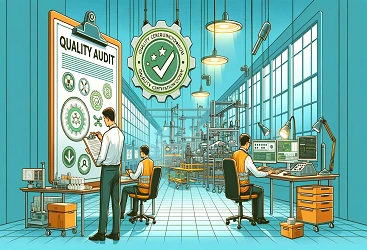What is Quality Audit?
A quality audit is a procedure in which a team of auditors, either internal or external, thoroughly examines a quality system. It is a key component ...
By AMREP | Posted on February 15, 2024
When you’re working with quality management professionals, you probably hear the terms ‘quality control’ and ‘quality inspection’ used a lot. As they are frequently used interchangeably (which is incorrect in our view), it can be extremely confusing. Here we explain the difference between them.
Both are distinct aspects of quality management. Quality Control (QC) involves processes that ensure a product or service meets specific standards. On the other hand, Quality Inspections are more like a focused examination, an assessment of products against agreed benchmarks. Clarifying these concepts is essential as they play different roles in your product quality.

Quality Control (QC) refers to a system of controls and processes used to ensure product excellence. It can consist of the following:

A proactive, risk-adverse quality control approach can help with the early detection and prevention of product defects.
Also, read about Why you need on-site QC inspections even more in the age of AI.
Quality Inspection (QI) is an essential checkpoint in product lifecycles. It checks whether the products being manufactured are as per your product specifications. Quality inspections can occur at different points in the manufacturing process:
Have a look at Quality Assurance Services on Some Customers’ Outsourced Products.
Understanding the distinction between Quality Control (QC) and Quality Inspection (QI) is essential in quality management. Although they are different, their roles are complementary in achieving the ultimate goal of quality assurance. QC is the overarching strategy that includes quality inspections as a critical component.
| Aspect | Quality Control (QC) | Quality Inspection (QI) |
|---|---|---|
| Definition | A systematic process for maintaining quality standards throughout production | A focused examination of products at various stages to ensure they meet specific standards |
| Scope | Broad, encompassing various quality management activities. | Narrower, is primarily concerned with the inspection of products. |
| Activities | Establishing standards, implementing procedures, and data analysis. | Incoming, in-process, final, and random inspections. |
| Focus | Preventive, aiming to avoid defects and quality issues. | Reactive, identifying defects and non-conformities in products. |
| Outcome | Consistent product quality, reduced defects, and continuous improvement | Confirmation that products meet quality standards at specific points in the process. |
While QC is a proactive approach, setting the standards and ensuring adherence throughout the production process, QI is more reactive, focusing on identifying and addressing issues in the final products. Together, they ensure the quality performance that customers demand of your products.
Visual tools, such as flow charts or diagrams, can further illustrate the interaction between QC and QI, highlighting how QC encompasses various stages of QI within its broader scope. For instance, a flowchart could show how QI activities fit into the larger QC process, demonstrating their complementary nature in achieving comprehensive quality assurance.
The implementation of QC and QI systems varies across industries, but their fundamental principles remain consistent. Here are a few examples of how QC and QI are applied in various sectors:
Implementing effective QC and QI systems offers a multitude of benefits, including:

Quality control and quality inspection play a crucial role in customer satisfaction and business success. By consistently delivering high-quality products and services, companies can:
Quality Control and Quality Inspection, though closely linked, serve distinct roles in upholding product and service standards. While QC is a broad, strategic approach focusing on preventing issues, QI is a targeted, reactive process for detecting them. Together, they form a comprehensive quality assurance framework. If managing these aspects sounds challenging, explore our Quality Management Solutions We streamline these crucial processes, ensuring your business stays ahead in quality management. Ready to lift your quality game? Let's connect
Read More : Quality Engineering vs. QA: Key Comparisons
Contact Us To See What We Can Do
Call Us
Mon - Sat 9.00 - 18.00
Sunday Closed


21 - September 2023
21
September
2023
A quality audit is a procedure in which a team of auditors, either internal or external, thoroughly examines a quality system. It is a key component ...

10 - May 2022
10
May
2022
First Article Inspections (FAI) is an advanced quality inspection method that allows you to verify production results thoroughly ...

18 - January 2023
18
January
2023
Manufacturing? Key Strategies Quality is a vital factor in manufacturing, as it affects every aspect of the production process and the final product. Quality in manufacturing means ...
